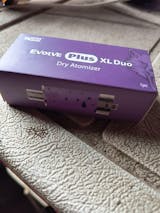With more and more states changing or eliminating their laws regarding dry herb use, this wonderful herb is available to some folks for the first time. Whether you’re a new user, or you haven’t partaken in some time, there are some things you need to know!
Like any growing industry, innovation has been rampant. If you’re new to the legal herb craze, it can all seem a bit daunting. Words like concentrates, wax, vaporizers, and edibles can all get a little confusing. You’ll be asking yourself “what happened to pipes and joints?” Smoking the herb is still an option, and a popular one, but there are more efficient and safer ways to enjoy it! We are going to cover vaporizing today, so strap in!
There aren’t a lot of medical studies regarding the dangers of smoking, or combusting, dry herb. It’s common knowledge that it’s “safer” than smoking tobacco, but any kind of smoke is not good for the lungs. An occasional joint isn’t going to do the kind of lung damage that cigarettes will, but from a safety and efficiency standpoint, vaporization is something you should really consider.
Vaporizing is the process of heating the dry herb to a temperature somewhere below it’s combustion point, usually between 350°F and 430°F. The active ingredients in your dry herb turn to vapor at a much lower temp than the rest of the plant will burn. So, when you’re vaporizing, you get all the medical benefits without the waste of the burning plant matter. The result is that you’re not putting any smoke into your lungs, and you’re getting the desired effects from your dry herb. As a bonus, the vaporized dry herb can also be saved and used to make butter and other treats, but we’ll cover that another time.
There are a ton of different options for vaporizers on the market, ranging in price from around $20 anywhere up to $1000 or more. Now, if you consider yourself a true connoisseur, you may want to “go big” right away and get the most expensive vaporizer you can find. I’m guessing that won’t be the case for most of you, so we’ll try to highlight more reasonable options, but more power to you!
When you’re looking for a vaporizer, there are essentially 2 categories you’ll want to consider. To make it as simple as possible, there are desktop vaporizers and portable vaporizers. Both have their benefits and drawbacks.
Desktop Vaporizers
A desktop vaporizer is just that; a vaporizer that you have on your desk or your table. Every vaporizer will require some kind of heating element, to bring the dry herb up to the desired temperature. In a desktop unit, the electricity used to generate this heat will come from your nearest electrical outlet via a cord. If you’re not looking to vaporize your dry herb on the go, this might be a great fit. With a desktop unit, you never have to worry about charging or battery life. You plug it in, turn it on and let it get up to temp, and then enjoy. The 2 most common types of desktops vaporizers are a “whip/tubing” system and the “bags/balloon” system.

The whip/tubing system is very simple. They will generally have a plastic or glass tube connected to a heating element. To use it, you fill the bowl with your material, turn on the unit, and draw/inhale the vapor through the whip/tube. The box style vaporizers are the OGs of the vaping world. They’ve been around for a long time and serve their purpose well. Here is an example of a whip style vaporizer.
The bag/balloon style vaporizer is like the whip style but has a fan inside the unit. The fan blows hot air through the bowl containing your dry herb. A plastic bag attached to the bowl fills up with vapor, and you simply inhale vapor from the bag once it’s full. Check back with VapPenSales soon for a great bag system vaporizer we’re getting in!
Portable Vaporizers
At this point, “portable vaporizer” is self-explanatory. The point of vaporizing is to get the dry herb to a certain temperature, and the portable units do this just like their bigger desktop counterparts. If you don’t want to be tethered to an outlet in your home or you want to be able to vaporize on the go, portable is the way to go. Instead of getting their power from an outlet, portable units generally use battery power. Most are small enough to be pocketed and will generally have enough juice to g ive you between 5 and 15 bowls between charges. Some have removable batteries, like the DaVinci IQ and the XMax Starry (pictured), while others have internal batteries, like the Pax 3 and the Boundless CFC.
ive you between 5 and 15 bowls between charges. Some have removable batteries, like the DaVinci IQ and the XMax Starry (pictured), while others have internal batteries, like the Pax 3 and the Boundless CFC.
Whichever unit you decide on, you’ll notice the benefits of vaporization versus combustion immediately. Check back soon; we’ll be covering wax and concentrates soon. Remember to save your vaped dry herbs and be sure to check out VapePenSales for all your herbal needs!






Leave a comment